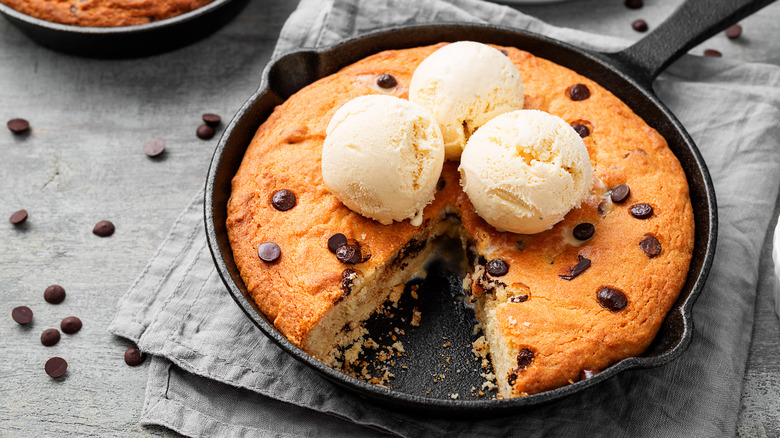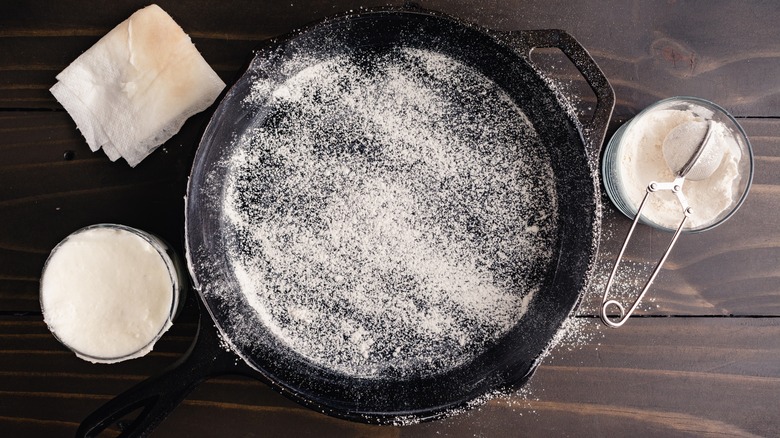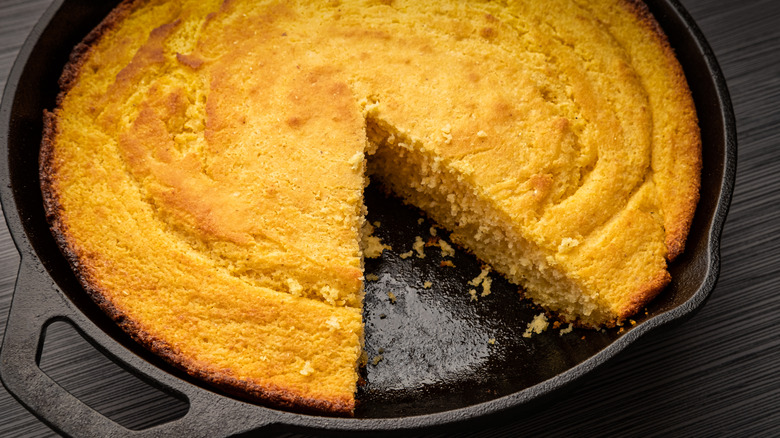The Importance Of Flour When Baking In A Cast Iron Skillet
While you can reach for other types of baking dishes or cake pans, swapping them out in favor of a cast-iron skillet definitely has its benefits. The material excels at retaining and distributing heat evenly, so you can easily avoid baking issues like sinking and cracking. Cast-iron bakeware also promotes better browning, allowing you to create brownies with chewier edges, or pies with crispier tops.
Even if you know all of the essential tips for baking in your cast-iron pans, there is one unfortunate downside to using them. Even though properly seasoned cast iron has non-stick properties, it isn't always reliable when it comes to baking. If you plan to serve your cobbler or giant gooey chocolate chip skillet cookie straight out of the pan, this won't be much of an issue, but it's a different story if you want to remove your baked goods in one piece. Luckily, stuck-on food is easily preventable as long as you make sure to flour your cast iron beforehand.
Why flouring is important when baking in a cast-iron skillet
It's important to understand that flouring a cast-iron skillet doesn't take the place of greasing it — the two applications work hand in hand. Greasing helps by providing lubrication, while the flour adds an additional layer of protection between the greased pan and the batter. This ensures a clean release and intact shape when removing the final product from the pan. Without greasing, you'd just be adding more flour to the batter that's touching the surface of the cast iron.
For best results, avoid greasing your skillet with butter or cooking spray. When used in combination with flouring, butter can burn and make removal difficult, and cooking spray can expedite browning. Shortening is the most ideal. However, if all you have on hand is cooking oil, it can work well too, so long as you make sure to apply only a thin layer of it using a paper towel because otherwise, it might make your baked goods greasy at the bottom.
How much flour should you add to your cast-iron skillet?
When flouring cast iron, much like when you grease it, you don't really need to measure out a specific amount of flour. However, a teaspoon is a good place to start. You may end up needing more or less depending on the size of your cast-iron skillet.
To properly flour a greased cast-iron skillet, all you have to do is lightly dust the entire inner surface of the skillet with flour, tapping and rotating the pan to distribute the flour evenly. Once all the greased areas are fully coated, tap the pan to remove any excess flour.
Removing the excess flour is a step you don't want to skip because when you use too much of it, it may leave a powdery residue on your cake that doesn't exactly look or taste very good. If you're baking something with chocolate, like Geoffrey Zakarian's brownies, you can even substitute some or all of the flour with cocoa powder following the same method. When it's time to take the finished product out of your cast-iron skillet, it should release with hardly any effort.


